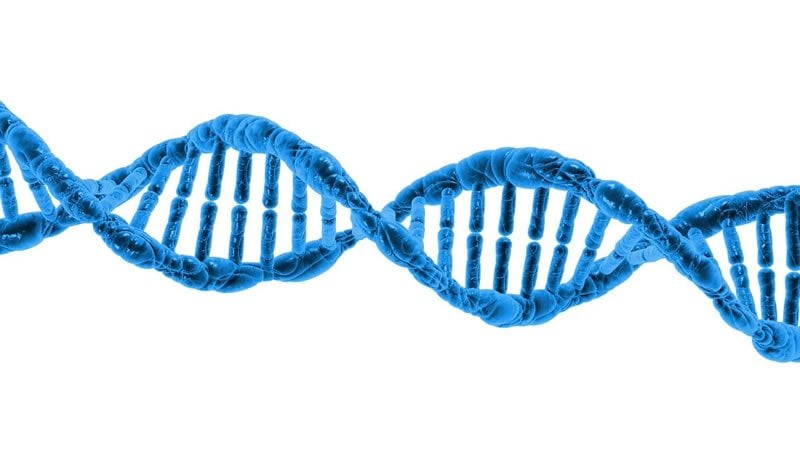Summary: The ELP1 gene is abnormally mutated in the germline DNA of 15% of children with the Sonic Hedgehog subgroup of medulloblastoma brain cancer.
Source: St. Jude Children’s Research Hospital
Investigators at St. Jude Children’s Research Hospital, the European Molecular Biology Laboratory, and the German Cancer Research Center have identified ELP1 as a novel predisposition gene in the SHH subgroup of pediatric medulloblastoma. The work appears as an advance online publication today in Nature.
Medulloblastoma is the most common malignant pediatric brain tumor. The SHH subgroup accounts for about 30% of all pediatric medulloblastoma cases. Previous research suggested that this subgroup is affected by genetic predisposition from abnormalities in the germline (inherited) DNA of patients. However, this prior work was restricted to known cancer predisposition genes.
“The scientific evidence and the experiences of patients and families suggested to us that inherited mutations might play a bigger role than previously thought,” said co-senior author Paul Northcott, Ph.D., of the St. Jude Department of Developmental Neurobiology. “By searching for genes beyond the usual suspects, we showed that a significant portion of SHH medulloblastoma with inherited mutations wasn’t being recognized.”
The team looked at all protein-coding genes (the exome) in more than 1,000 patients with medulloblastoma. The researchers compared their medulloblastoma findings to more than 118,000 exomes from several databases of individuals without cancer. Results showed that the gene ELP1 is abnormally mutated in the germline DNA of 14-15% of children with SHH medulloblastoma.
With the addition of ELP1 to the list of known cancer predisposition genes, the researchers showed that at least 40% of pediatric SHH medulloblastoma is driven by an inherited abnormality. ELP1 mutations occur at more than double the rate of any other previously acknowledged cancer predisposition gene in SHH medulloblastoma.
A better understanding of predisposition
ELP1 normally functions as part of a multi-subunit complex called elongator. Elongator plays a role in regulating translation, the process of translating genetic information into proteins. This finding supports investigations into how dysregulation of translation contributes to medulloblastoma.

“When multiple members of a family have the same kind of medulloblastoma, but don’t have mutations in any of the recognizable predisposition genes, there has to be more to the story,” said co-first author Giles Robinson, M.D., of the St. Jude Department of Oncology. “ELP1 has not been part of routine genetic testing offered to patients and families, but this work suggests that it should be included for medulloblastoma.”
The researchers also found that ELP1 may help guide prognosis. Patients with this mutation tend to do well on currently available therapies. Researchers are continuing to study ELP1 in the laboratory to determine if the identified mutations could be used to tailor medulloblastoma therapy in the future.
The other co-senior authors are Jan Korbel of the European Molecular Biology Laboratory and Stefan Pfister of the German Consortium for Translational Cancer Research, Hopp Children’s Cancer Center Heidelberg and the German Cancer Research Center. The other co-first author is Sebastian Waszak of the European Molecular Biology Laboratory. Other St. Jude authors include Brian Gudenas, Kyle Smith, Kayla Hamilton, Aksana Vasilyeva, Ruth Tatevossian, Geoffrey Neale, Brent Orr, David Ellison, Kim Nichols and Amar Gajjar. The study features additional authors from 33 affiliations.
Funding: The research at St. Jude was funded in part by the Pew-Stewart Scholars for Cancer Research, the Sontag Foundation, the American Association for Cancer Research, the Brain Tumor Charity (Quest for Cures), and by grants from the National Cancer Institute (CA232143-01) and ALSAC, the fundraising and awareness organization of St. Jude.
Source:
St. Jude Children’s Research Hospital
Media Contacts:
Katy Hobgood – St. Jude Children’s Research Hospital
Image Source:
The image is in the public domain.
Original Research: Closed access
“Germline Elongator mutations in Sonic Hedgehog medulloblastoma”. Paul Northcott et al.
Wellcome Open Research doi:10.1038/s41586-020-2164-5.
Abstract
Germline Elongator mutations in Sonic Hedgehog medulloblastoma
Cancer genomics has revealed many genes and core molecular processes that contribute to human malignancies, but the genetic and molecular bases of many rare cancers remains unclear. Genetic predisposition accounts for 5 to 10% of cancer diagnoses in children, and genetic events that cooperate with known somatic driver events are poorly understood. Pathogenic germline variants in established cancer predisposition genes have been recently identified in 5% of patients with the malignant brain tumour medulloblastoma3. Here, by analysing all protein-coding genes, we identify and replicate rare germline loss-of-function variants across ELP1 in 14% of paediatric patients with the medulloblastoma subgroup Sonic Hedgehog (MBSHH). ELP1 was the most common medulloblastoma predisposition gene and increased the prevalence of genetic predisposition to 40% among paediatric patients with MBSHH. Parent–offspring and pedigree analyses identified two families with a history of paediatric medulloblastoma. ELP1-associated medulloblastomas were restricted to the molecular SHHα subtype and characterized by universal biallelic inactivation of ELP1 owing to somatic loss of chromosome arm 9q. Most ELP1-associated medulloblastomas also exhibited somatic alterations in PTCH1, which suggests that germline ELP1 loss-of-function variants predispose individuals to tumour development in combination with constitutive activation of SHH signalling. ELP1 is the largest subunit of the evolutionarily conserved Elongator complex, which catalyses translational elongation through tRNA modifications at the wobble (U34) position. Tumours from patients with ELP1-associated MBSHH were characterized by a destabilized Elongator complex, loss of Elongator-dependent tRNA modifications, codon-dependent translational reprogramming, and induction of the unfolded protein response, consistent with loss of protein homeostasis due to Elongator deficiency in model systems. Thus, genetic predisposition to proteome instability may be a determinant in the pathogenesis of paediatric brain cancers. These results support investigation of the role of protein homeostasis in other cancer types and potential for therapeutic interference.






